What Is ADHD?

Explore Your ADHD Journey
ADHD Assessments at Level Up Wellness Group
At Level Up Wellness Group, we provide specialized ADHD assessments tailored to meet your unique needs. Our approach ensures accurate diagnosis and a comprehensive understanding of ADHD, empowering individuals and families to move forward with confidence. Choose from two categories of ADHD assessment options:
1. ADHD Assessments with an ADHD Assessor (Psychology: Bookable Online: Free 20 min virtual meet and greet)
Our ADHD assessors specialize in evaluating children, youth, and adults for ADHD using evidence-based tools and techniques. Choose from the following options:
a) Formalized ADHD Diagnosis
- Designed to determine if ADHD is present or not.
- Includes thorough clinical interviews and diagnostic evaluation.
- A formal diagnostic letter is provided, which can be shared with your family doctor or other healthcare providers.
b) Comprehensive ADHD Assessment
- Recommended for individuals facing difficulties in:
- Maintaining employment.
- Academic performance
- Understanding overlapping conditions such as anxiety, depression, sleep issues, or learning disabilities.
- Offers a deeper understanding of how ADHD may impact various areas of life.
- Includes actionable recommendations for treatment, accommodations, and ongoing support.
2. Medical and Psychiatric ADHD Assessment (Medical Team: Call Clinic to Book)
Led by our nurse practitioners with expertise in ADHD, this option focuses on both medical and psychiatric aspects of ADHD. Services are available for children, youth, and adults.
1. A thorough medical consultation reviewing medical history and a clinical interview for the first appointment.
2. A second appointment identifies a treatment plan. An ADHD diagnostic report is included. If a consultation letter with accommodations or other strategies is required, this is an additional cost. A Disability Tax Credit application requires a separate appointment.
$400 for the first appointment $200 for the second appointment $200 per follow-up Appointment length and cost may vary based on patient complexities
Understanding the Challenges of ADHD

Task Management
Activation
- Planning
- Organizing
- Prioritizing
- Getting started
- Time management
- Sequencing
- Procrastination

Action Management
Action
- Hyperactivity
- Impulse control
- Monitoring
- Self-regulating
- Motor coordination
- Sequencing
- Fidgeting
- Handwriting

Information Management
Memory
- Working memory
- Recall
- Forgetfulness
- Issues in Math
- Essay Writing
- Learning from mistakes
- Organizing ideas

Attention Management
Focus
- Shifting attention
- Focusing
- Hyperfocus
- Distractibility
- Staying on task
- Handling transitions
- Paying attention

Emotional Management
Emotion
- Outbursts
- Intense emotions
- Frustration tolerance
- Oppositional
- Reactive
- Defensiveness
- Shutting down

Effort Management
Energy
- Maintaining energy
- Alertness
- Sustaining effort
- Processing speed
- Completion
- Making decisions
- Looks unmotivated
Emotional Dysregulation and Executive Functioning
- Disorder of self-regulation & executive functioning
- Emotional Self-Control
- Comorbidity
ADHD in Childhood
In children, ADHD is often recognized by hyperactivity, difficulty focusing, and impulsive behavior. Children with ADHD may struggle with tasks that require sustained mental effort, following instructions, or sitting still. Hyperactivity, particularly, is more visible in boys, leading to more frequent diagnoses among males. Girls, on the other hand, are more likely to exhibit inattentive symptoms, often leading to underdiagnosis or late diagnosis because their behavior may not be as disruptive. Research by Hinshaw and colleagues (2014) suggests that girls with ADHD often mask or camouflage their symptoms, which makes identification more challenging.


ADHD in Adolescence
During adolescence, hyperactive symptoms may decline, but impulsivity and inattention often persist. Teenagers with ADHD frequently struggle with time management, academic achievement, and emotional regulation. Adolescents may engage in risky behaviors, experience difficulties with peer relationships, and face greater challenges with self-esteem. Studies have indicated that untreated ADHD can increase the risk of substance abuse and involvement in legal issues during this developmental stage. Adolescents also face unique challenges as they transition from parental supervision to increased independence.
ADHD in Adulthood
ADHD often presents differently in adults compared to children. Adults may experience persistent difficulties with organization, time management, and maintaining focus on tasks. They may also struggle with impulsive decision-making, emotional regulation, and restlessness. ADHD symptoms can lead to difficulties in maintaining steady employment, healthy relationships, and managing daily life tasks. Many adults may not realize they have ADHD until later in life, often after seeking treatment for depression or anxiety. Studies suggest that undiagnosed ADHD in adults can have significant impacts on mental health, quality of life, and even physical health outcomes.

ADHD and Aging
In later life, ADHD symptoms may be complicated by the aging process. Some symptoms, such as impulsivity, tend to wane, but challenges with memory, executive function, and cognitive tasks may persist or worsen. There is also evidence that untreated ADHD can exacerbate age-related cognitive decline, increasing the risk of conditions like dementia.
Current Studies on Undiagnosed ADHD and Treatment:
Recent studies have focused on the impact of undiagnosed and untreated ADHD, particularly among specific populations such as offenders, women, and older adults. In the UK, for example, a study is examining repeated offenders within the criminal justice system to determine how many meet the criteria for ADHD. Emerging research indicates that a significant proportion of offenders have undiagnosed ADHD, and untreated ADHD may increase the likelihood of impulsive, risky behavior, which contributes to recidivism. This has led to discussions about the need for screening and treatment of ADHD within this population as a potential way to reduce re-offending rates (Young et al., 2020).
Other studies are exploring how undiagnosed ADHD affects women’s lives, as females are more likely to be diagnosed later in life, often during perimenopause or after a child is diagnosed with ADHD. Hormonal changes during menopause, for example, can exacerbate ADHD symptoms, leading to difficulties in daily functioning. Treatment approaches for these women are being investigated to determine the role of hormone therapy alongside traditional ADHD treatments like stimulant medications.
ADHD in Women: How It Presents Differently Across Life Stages
ADHD (Attention-Deficit/Hyperactivity Disorder) has historically been underdiagnosed in women and girls, largely due to the ways symptoms are expressed and often masked. While ADHD is often associated with disruptive behaviour, the presentation in females can be more subtle and masked by social strategies such as camouflaging, where individuals work hard to hide their symptoms, leading to delayed or missed diagnosis. Here’s how ADHD can show up in girls, teenagers, and women, particularly as they navigate major hormonal transitions like perimenopause and menopause.
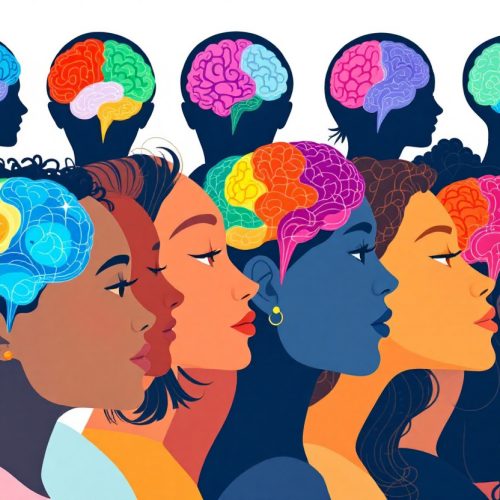
Masking and Camouflaging ADHD Symptoms in Females
- Masking involves actively concealing ADHD symptoms to fit in socially or meet expectations, often by mimicking the behaviour of others.
- Camouflaging refers to adapting or compensating for ADHD traits, such as excessive organization or rehearsing conversations in social situations to appear more attentive or socially adept.
These strategies may help avoid detection but can also lead to exhaustion, anxiety, and low self-esteem over time, as they require a great deal of mental energy and self-regulation.

ADHD in Girls
In childhood, girls with ADHD may not show the overt hyperactivity or disruptive behavior often seen in boys. Instead, their struggles might look like:
- Daydreaming or being “spacey”
- Difficulty focusing in class, especially during quiet or independent work
- Struggling with organization and following multi-step instructions
- Issues with impulse control, such as blurting out answers, but often less visible in structured environments
- Social struggles on the playground, such as trouble reading social cues or being overly talkative, but rarely seen as problematic behavior
Girls often internalize their struggles, leading to feelings of inadequacy or frustration that may go unnoticed by teachers or caregivers. Since they may still perform well academically, the signs of ADHD are frequently misattributed to laziness or lack of motivation.
ADHD in Teenage Girls
During adolescence, hormones such as estrogen and progesterone fluctuate, which can exacerbate ADHD symptoms. Teen girls may experience:
- Increased anxiety or depression as they struggle to manage schoolwork, social relationships, and hormonal changes
- Emotional dysregulation that presents as mood swings, irritability, or overwhelming feelings, often mislabeled as normal teenage angst
- Struggles with time management and procrastination, especially in unstructured or less stimulating environments
- Social difficulties due to ADHD-related impulsivity or distractibility, which may lead to strained friendships, as well as feelings of rejection or exclusion
Teen girls often continue to use camouflaging techniques, focusing on social acceptance and conformity. This further mask their ADHD and can lead to burnout as they transition to adulthood.
ADHD in Women: Perimenopause and Menopause
ADHD in adult women can become particularly challenging during perimenopause and menopause, as hormone levels fluctuate significantly. Estrogen plays a crucial role in cognitive functioning, including attention, memory, and executive functioning, all areas affected by ADHD. As estrogen declines, women may experience:
- Worsening ADHD symptoms, including difficulties with concentration, memory, and organization
- Increased brain fog, where even simple tasks feel overwhelming or hard to manage
- Heightened emotional dysregulation, such as irritability, frustration, or feeling overwhelmed by small tasks
- Feelings of imposter syndrome or self-doubt, especially if they have spent years masking their symptoms
- Changes in coping strategies as old methods of camouflaging may no longer work or feel sustainable
During this time, many women may feel like their ADHD symptoms are finally surfacing or becoming unmanageable, even if they have never been diagnosed before. The shift in hormone levels during perimenopause and menopause can amplify the cognitive challenges and emotional instability that often accompany ADHD, making it a particularly vulnerable time for women.

Social Dynamics and Misunderstandings
One of the biggest challenges in diagnosing ADHD in females is the overemphasis on disruptive behavior in early assessments. Because girls and women are often socialized to be compliant and nurturing, they may not exhibit outward behavioral problems. Instead, their struggles may manifest in:
- People-pleasing tendencies that hide their internal chaos
- Hyperfocus on social relationships, trying to fit in with peers but struggling with social nuances or conflict resolution
- Sensitivity to rejection, often feeling excluded or misunderstood, which can exacerbate anxiety and depression
This focus on how females “get along with others” or behave in social situations often leads to a missed diagnosis, as attention is not given to the internalized distress or the less visible symptoms of ADHD.
Support for Your Neurodivergent Brain
No matter which path you take, knowing how your brain works and the best strategies to support it can make a world of difference. Whether it’s through diagnosis alone, medication, supplements, or in-depth assessments, we are here to help you make informed decisions and find the right path forward.
Most common diagnoses that frequently co-occur with ADHD:
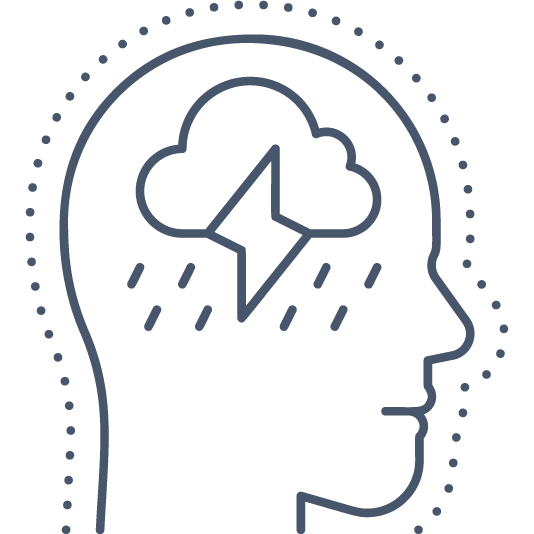
Anxiety Disorders
Includes Generalized Anxiety Disorder (GAD), Social Anxiety, and Panic Disorder. Many individuals with ADHD experience anxiety due to difficulties managing tasks and social situations.
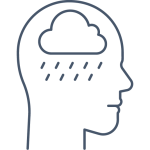
Depressive Disorders
Major Depressive Disorder (MDD) and Dysthymia (Persistent Depressive Disorder) often co-occur with ADHD, especially in adolescents and adults. Challenges in managing ADHD symptoms can contribute to feelings of hopelessness and low self-esteem.

Oppositional Defiant Disorder (ODD)
More common in children with ADHD, particularly those with hyperactive-impulsive symptoms. ODD involves persistent anger, irritability, and defiance toward authority figures.
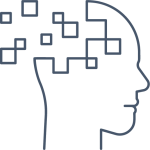
Learning Disabilities
ADHD frequently coexists with dyslexia, dyscalculia, or other specific learning disabilities, making academic achievement challenging for many children and adolescents.
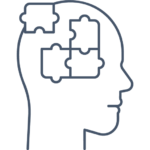
Autism Spectrum Disorder (ASD)
ADHD and ASD can co-occur, particularly in individuals who struggle with executive functioning, social interactions, and emotional regulation.
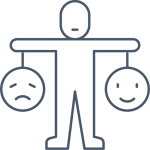
Mood Disorders
Bipolar Disorder can sometimes be misdiagnosed or co-exist with ADHD, particularly when mood instability is prominent.
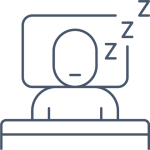
Sleep Disorders
Problems like insomnia and sleep apnea are common among individuals with ADHD, which can exacerbate attention and emotional regulation issues.
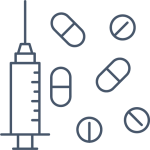
Substance Use Disorders (SUD)
Adolescents and adults with ADHD are at higher risk for developing substance use disorders, often as a form of self-medication for unmanaged ADHD symptoms.
These are the most frequent conditions found alongside ADHD and require careful assessment to manage both ADHD and the co-occurring conditions effectively.
Unidentified and Untreated ADHD
When ADHD is not identified and treated, both boys and girls face various day-to-day issues and long-term risks across the lifespan. The impact may differ based on gender due to the ways ADHD symptoms manifest and are socially received. Here are some of the common issues and risks across different life stages:

In Childhood:
Boys:
- Behavioral Problems: Boys with untreated ADHD are more likely to exhibit hyperactive and impulsive behaviors, leading to frequent disciplinary actions at school (e.g., suspensions, time-outs) due to disruptive behavior.
- Social Challenges: Boys with ADHD may struggle with peer relationships, displaying aggressive or overly energetic behaviors that result in social rejection or isolation.
- Academic Struggles: Difficulty concentrating, following instructions, and completing assignments may lead to poor academic performance and frustration. Over time, these boys might be labeled as “troublemakers” or “lazy,” impacting their self-esteem.
Girls:
- Underdiagnosis and Inattention: Girls are often more inattentive than hyperactive, which can result in their symptoms being overlooked or misunderstood. They might seem “spacey” or disorganized but are not disruptive, so they are less likely to receive early intervention.
- Internalizing Issues: Girls with untreated ADHD may struggle with anxiety, low self-esteem, and perfectionism as they fail to meet academic or social expectations. These feelings can lead to internalizing behaviors like withdrawing socially or developing negative self-perceptions.
- Poor Academic Achievement: Inattentiveness leads to missing instructions, struggling to complete homework, and procrastination. Academic struggles can go unnoticed due to masking or compensating strategies until they fall behind.

In Adolescence:
Boys:
- Risk-Taking Behavior: Untreated ADHD can lead to impulsive and risk-taking behaviors, such as substance use, reckless driving, and early sexual activity. These behaviors can increase the risk of accidents, legal issues, or substance abuse disorders.
- Emotional Dysregulation: Boys with ADHD may experience significant mood swings, irritability, or anger issues. Their inability to manage frustration and emotions can lead to increased conflicts with family, teachers, and peers.
- Academic Failure and Dropout: Persistent academic struggles can lead to school failure or early dropout. Boys with untreated ADHD are more likely to experience disengagement from school, further limiting future educational and career prospects.
Girls:
- Social Isolation: In adolescence, untreated ADHD can result in difficulties forming or maintaining friendships, especially as social expectations grow more complex. Girls may feel “different” from their peers, leading to feelings of loneliness and exclusion.
- Mental Health Issues: The internal struggles of ADHD in girls, including low self-esteem, may lead to the development of anxiety, depression, or eating disorders. Because girls often mask their symptoms, they may experience chronic stress as they attempt to meet expectations without adequate support.
- Poor Self-Esteem: Failure to keep up with academic and social expectations may negatively impact self-concept, leading to feelings of inadequacy or self-blame.

In Adulthood:
Boys (Now Men):
- Workplace Struggles: Men with untreated ADHD may face challenges in maintaining jobs, completing tasks, or meeting deadlines due to difficulties with organization and time management. Frequent job changes or underemployment may result from struggles with sustaining attention and productivity.
- Relationship Difficulties: Emotional dysregulation, impulsivity, and poor communication skills can strain personal relationships, leading to higher rates of divorce, marital discord, or conflicts with children or coworkers.
- Substance Abuse and Legal Problems: Men with untreated ADHD may be at higher risk for substance use and legal issues, especially if they engaged in risky behaviors during adolescence. Impulsive decision-making and difficulty regulating emotions can exacerbate these problems.
Girls (Now Women):
- Career Challenges: Women with untreated ADHD may struggle to juggle career, family, and social responsibilities due to difficulties with focus, organization, and time management. They may be perceived as disorganized or unreliable in the workplace, which can hinder career advancement.
- Mental Health Struggles: Anxiety and depression may worsen over time, particularly as women face life changes like marriage, parenthood, or menopause. Many women are diagnosed with ADHD only in adulthood, often after years of struggling to cope with undiagnosed symptoms.
In Older Adulthood:
Men:
- Chronic Health Issues: Impulsive behaviors and lifestyle challenges may contribute to long-term health problems, including obesity, cardiovascular disease, or substance abuse disorders. Untreated ADHD can also increase the risk of accidents or injuries in older age.
- Financial Instability: Poor financial management, impulsive spending, or an inability to plan for the future can lead to financial instability. Many men with untreated ADHD struggle with budgeting, saving, or managing debts.
Women:
- Hormonal Effects on ADHD: For women, hormonal changes during perimenopause and menopause can exacerbate ADHD symptoms. These changes often lead to worsening memory, attention, and emotional regulation, especially in women who were undiagnosed earlier in life.
- Cognitive Decline: The cognitive challenges associated with untreated ADHD can become more pronounced with age, increasing the risk of dementia or other forms of cognitive impairment. Women may struggle with managing daily tasks, remembering appointments, or organizing their lives.
Long-Term Risks for Both Genders:
- Mental Health Disorders: Untreated ADHD significantly increases the risk of developing co-occurring mental health disorders, such as anxiety, depression, or substance use disorders, over the lifespan.
- Reduced Quality of Life: Struggles with maintaining relationships, employment, and daily responsibilities can lead to long-term dissatisfaction, reduced self-esteem, and a sense of underachievement.
- Higher Rates of Accidents and Injuries: Impulsivity and inattention associated with untreated ADHD increase the likelihood of accidents, injuries, and risky behaviors, which may have long-lasting consequences on physical health.
Addressing ADHD early and implementing proper treatment strategies can mitigate these risks and improve outcomes for both boys and girls throughout their lives. Treatment can enhance emotional regulation, improve academic and career achievements, and support healthier relationships and social development.
ADHD Decision-Making Guide In Accessing Our Services
Do I Have ADHD?
Understanding whether you or your child may have ADHD (Attention-Deficit/Hyperactivity Disorder) is a journey that requires careful consideration of the type of support you’re looking for. Use the guide below to help navigate the best path for you or your loved one.
If someone in the immediate family has ADHD, there is a much greater risk that your child will have ADHD due to the largely genetic element of ADHD.
Path 1: Diagnosis Only, No Treatment Required
Not Interested in Medication or Psychological Support?
If you’re seeking confirmation of ADHD but are not interested in treatment options like medication or therapy, you can schedule an ADHD diagnostic assessment. This will give you clarity on whether you or your child has ADHD without further involvement in treatments or psychological care
Best For: Individuals or parents who simply want a diagnosis for personal knowledge or to understand their challenges better.
Path 2: ADHD Diagnosis with Medication Support
Interested in Diagnosis and Medication and/or Holistic Support?
If you’re seeking not only a diagnosis but are also considering medication and holistic (supplements) as part of the treatment, book an appointment with our nurse practitioner. They can provide a thorough diagnosis, discuss medication options, and help manage symptoms with prescribed treatments.
Best For: Individuals or parents are open to using medication and supplements as a tool to manage ADHD symptoms.
Path 3: In-Depth Understanding and Support
Looking to Understand How ADHD Impacts Learning and Life?
If you or your child is facing difficulties in multiple environments (home, school, work) and you want to know more about how your brain operates, we recommend a psychoeducational assessment. This assessment not only helps diagnose ADHD but also explores other cognitive and emotional factors. You’ll gain insight into your neurodivergent brain and how to support it in different aspects of life.
Best For: Parents or individuals seeking a comprehensive understanding of learning, emotional, and social challenges, along with recommendations for educational and environmental accommodations.
If your child has struggles with learning in any manner: speed, comprehension, focus, or attention, this option is highly recommended. At least 50 percent of children who have ADHD have a learning disorder. This needs to be identified and evidence-based strategies put in place.
Need support for post-secondary environments
Path 4: Females in the Perimenopause or Menopause Era
It is best to book in with our nurse practitioner who can take a holistic approach to managing your symptoms. This includes the possibility of discussing medication, supplements, vitamins and then therapy to support your needs. Bloodwork will likely be order to understand the link of what is occurring and to provide you with a specific plan to meet your needs.

